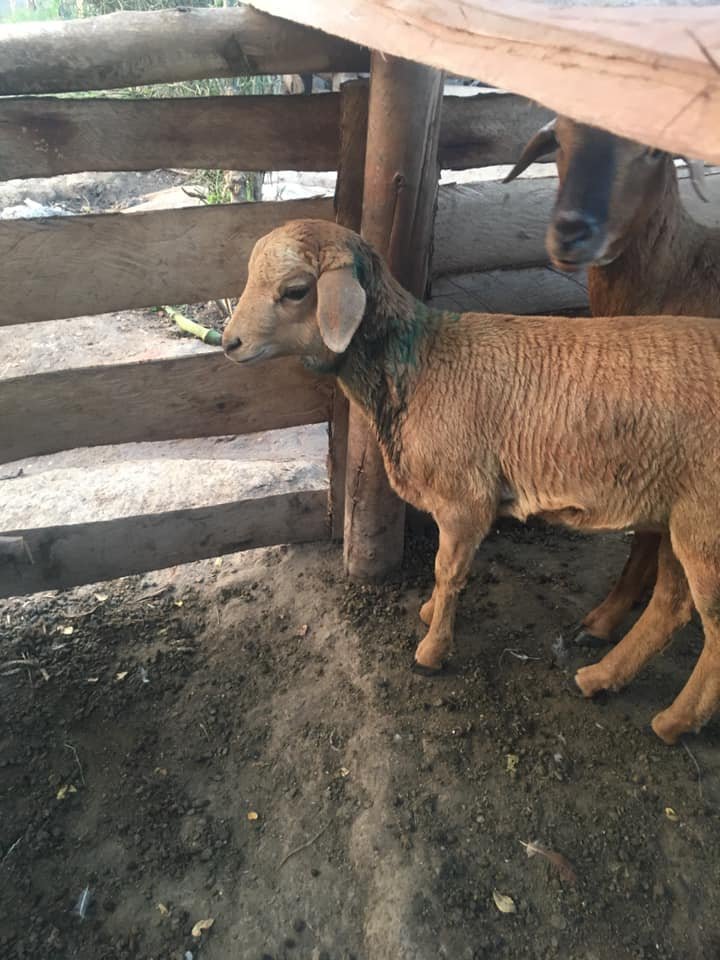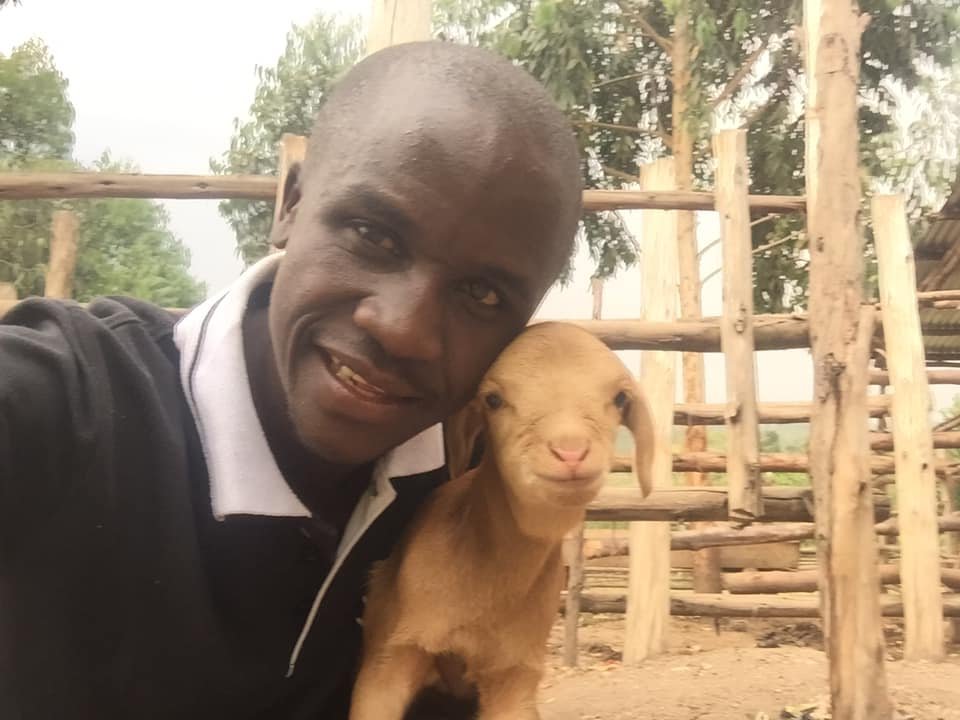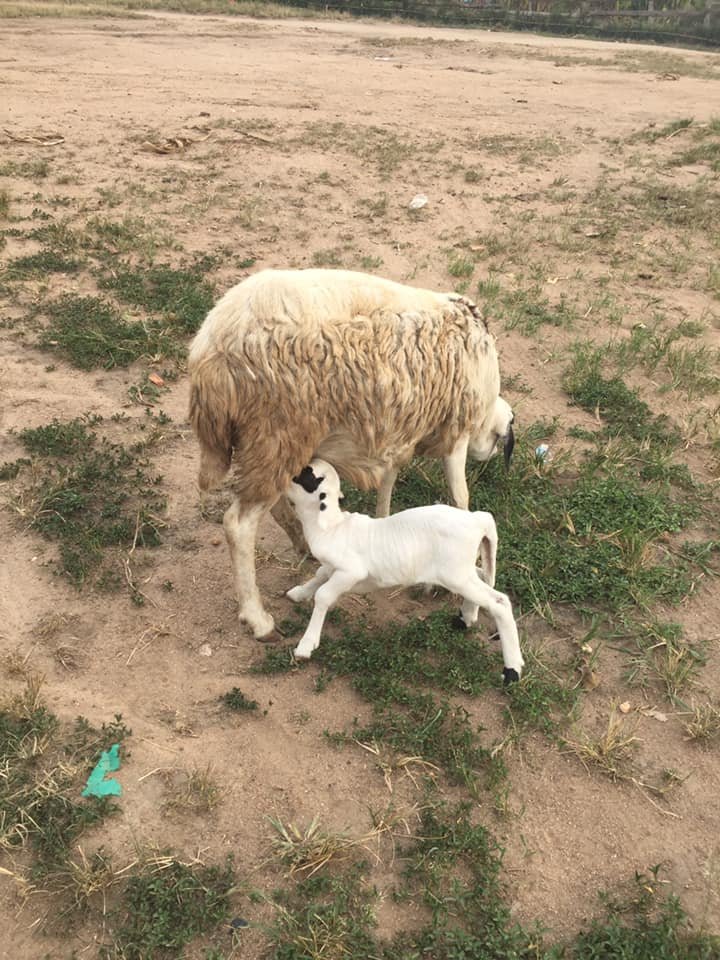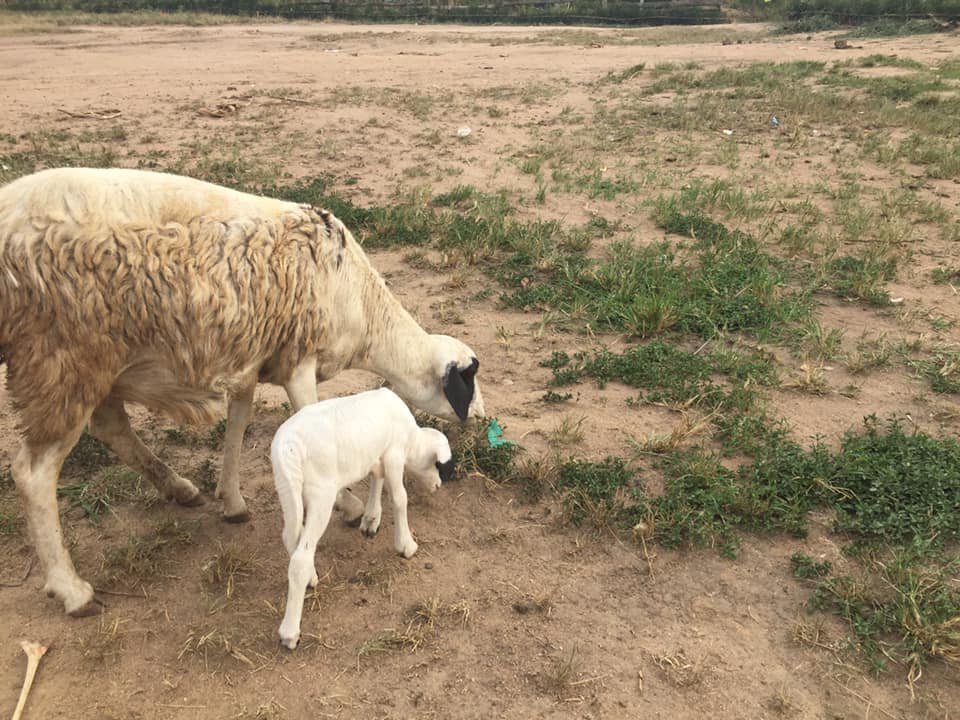Life in Kafunjo: Livestock
The Kafunjo Community Project has a lot of livestock that benefit them in many ways. One benefit that all the animals offer is manure that is mixed with soil when doing agricultural work. Kafunjo has pigs, chickens, ducks, sheep, goats, and cows. Sedracka, a friend of Bruno’s, is in charge of letting the cows graze and making sure all animals are cared for. There is no chore system in place for the children to help with taking care of the livestock. Rather, throughout the day, different groups of children may be assigned specific tasks to accomplish together (like cleaning the pig pen, for example). There is not a chore system in place because the children are already working very hard and have limited free time. However, the children often volunteer to help with caring for the animals because they enjoy it and they love to be helpful. On the weekends when children are free from classes, The Primary 7 children are especially helpful. Bruno loves animals very much and he puts a lot of effort into making sure they are well kept and happy.
“I help in looking after livestock and mainly goats as they are my favorite. I fetch water for them and find wild food like potato leaves for them to eat. I like the job of caring for livestock because the animals are like my pets.”
- Topista, a child at The Kafunjo Community Project
COWS
The biggest benefit to owning cows is having milk. At the time this article was written (Fall of 2021), Kafuno only had one milk-producing cow that they milk each morning and night. Bruno doesn’t have plans to sell their cows for profit because they are such a great benefit to the Project and he is always seeking ways to give the children at the orphanage a greater variety in their diets. Young cows cost about $115 and fully grown cows cost closer to $350. They do not have a smaller enclosure and are always kept in the large corral. They eat grass, plants, and are also fed banana peels.
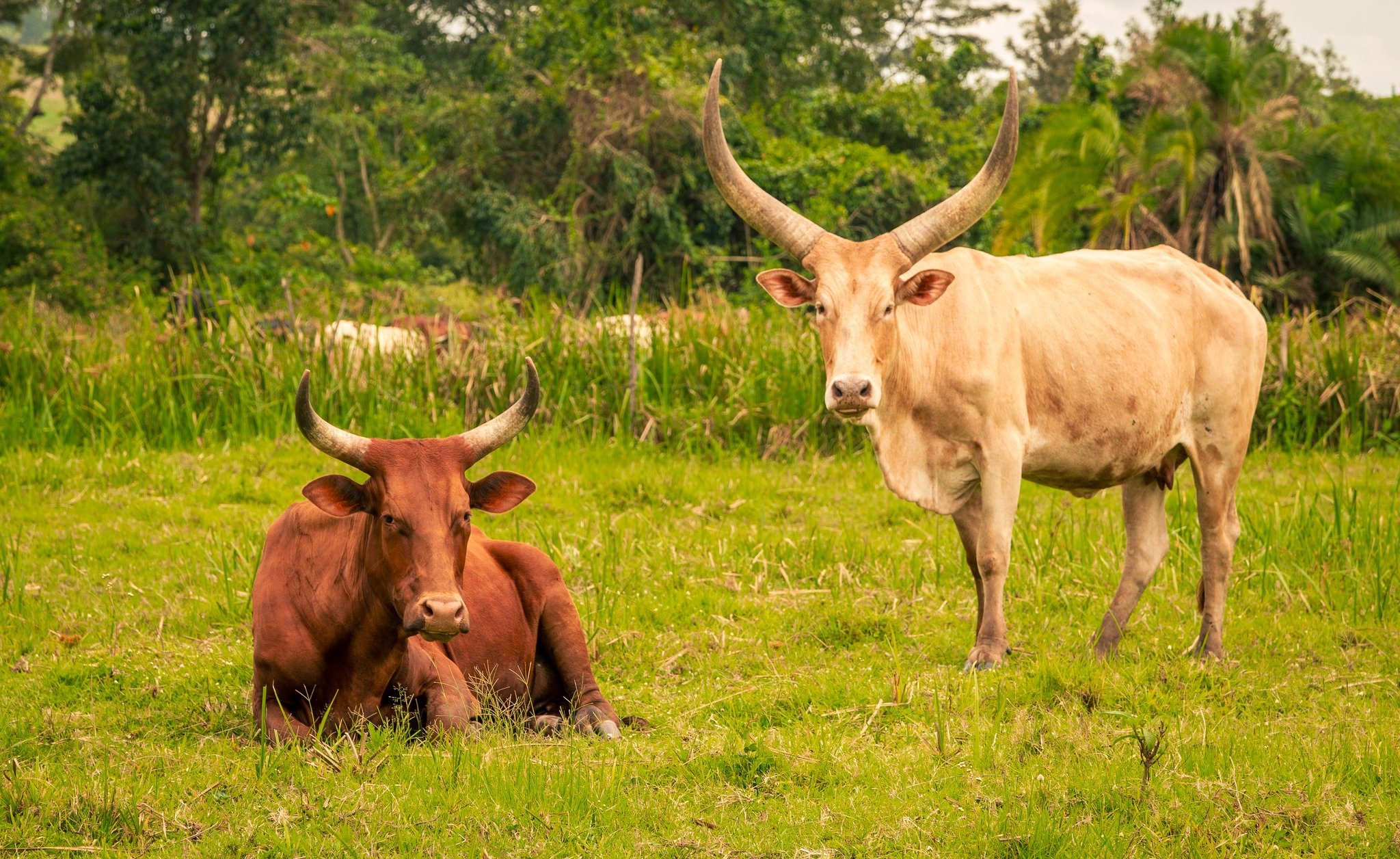
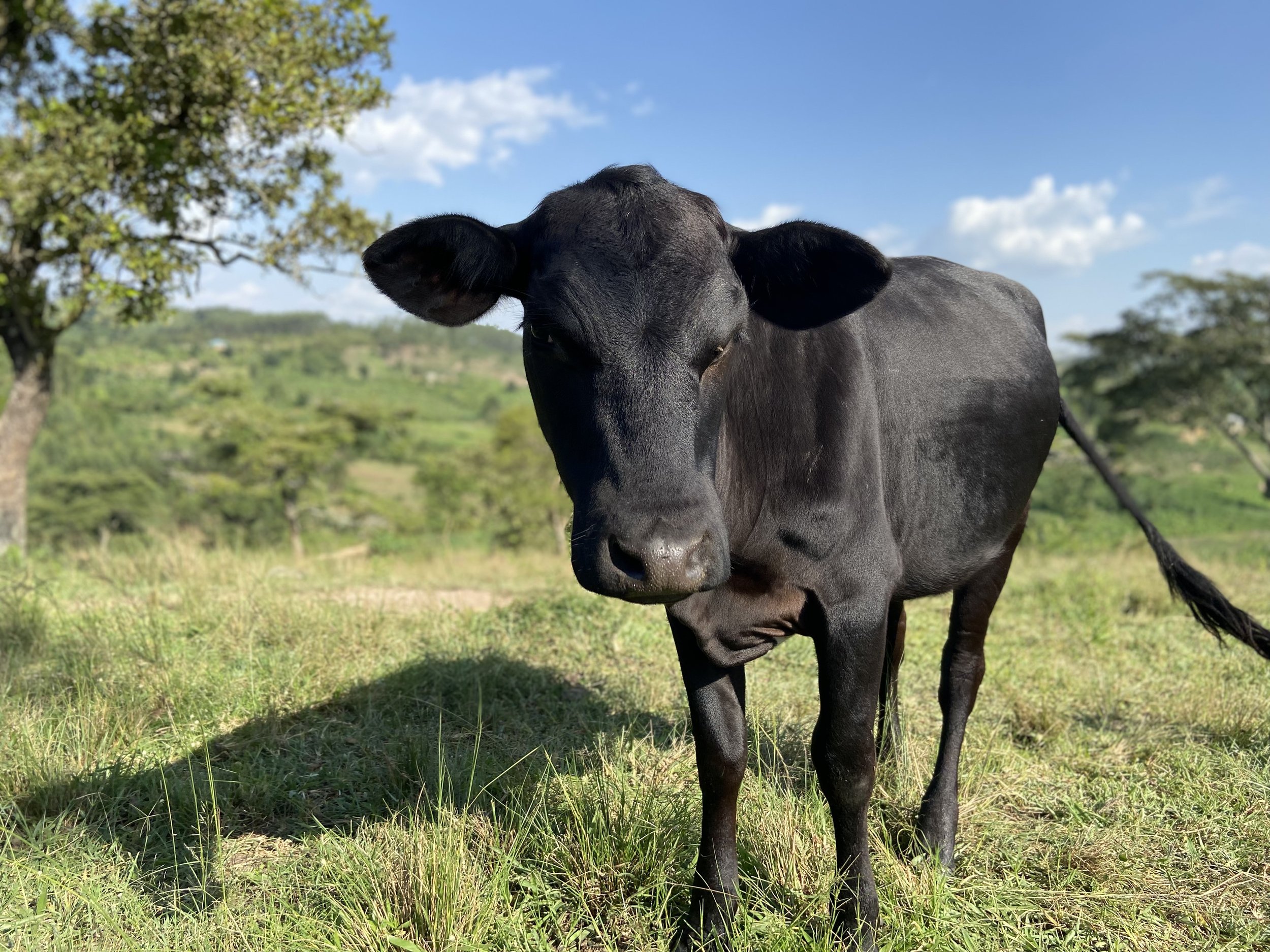
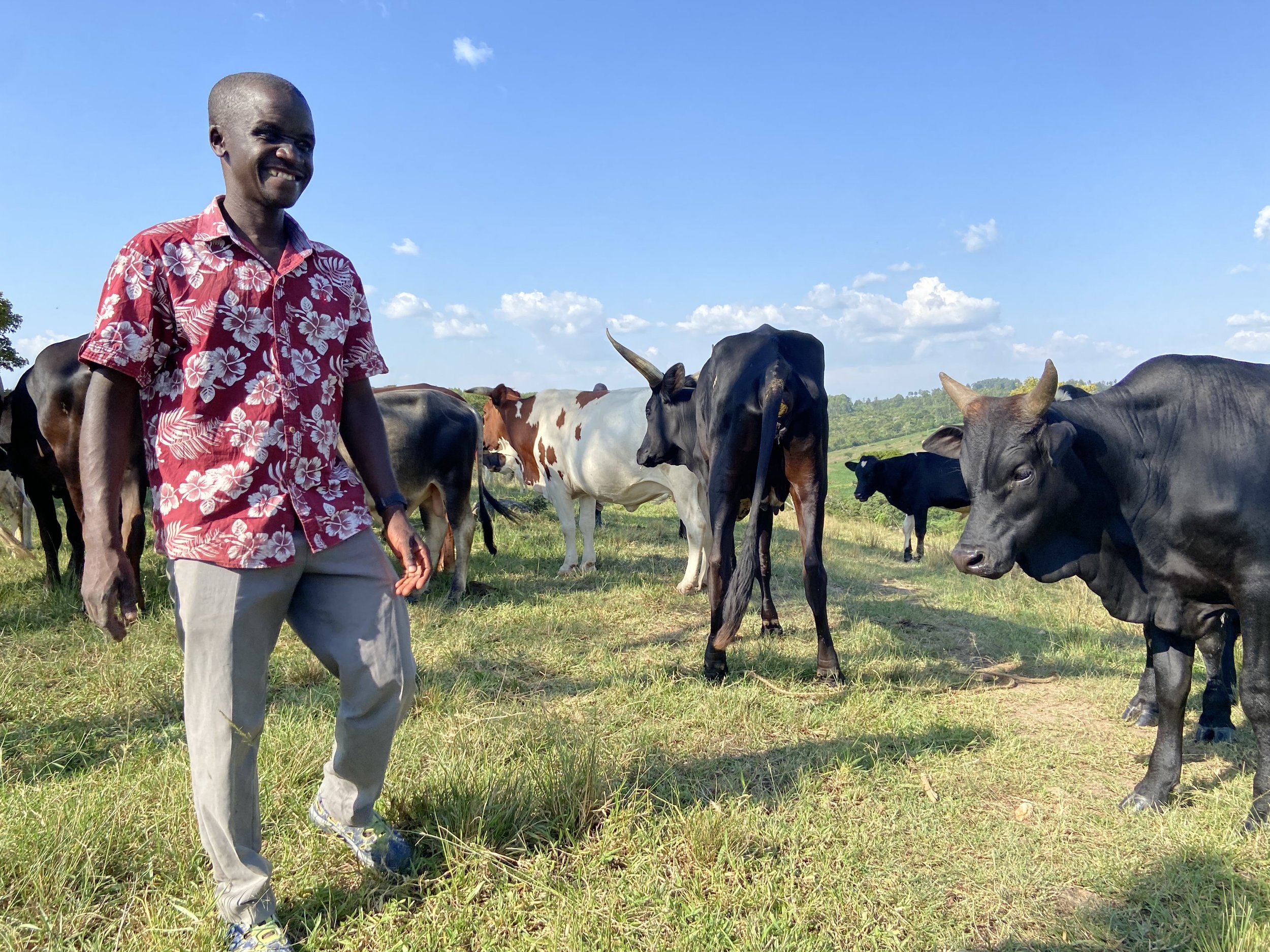
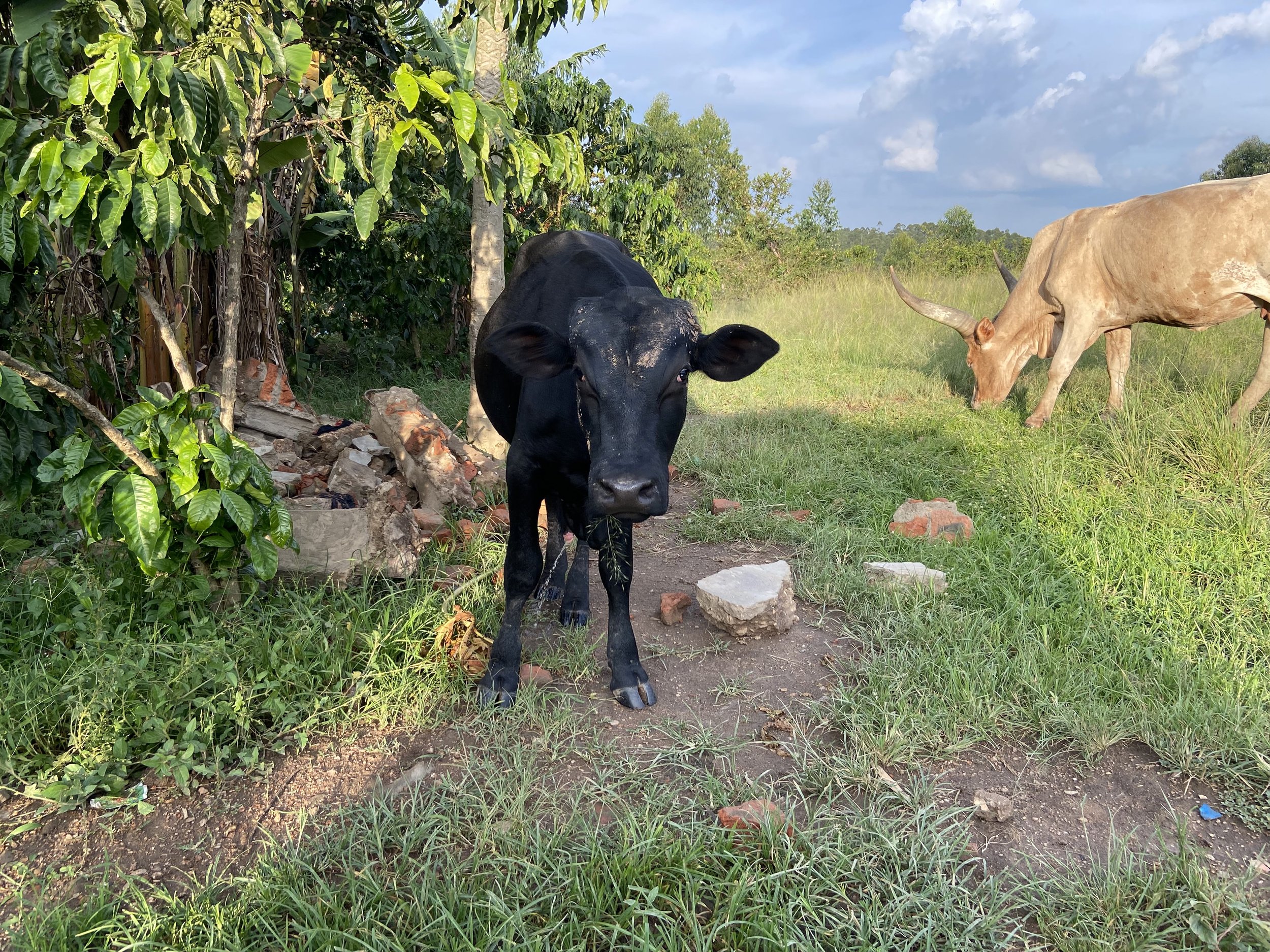
PIGS
Female pigs give birth twice a year and have a gestation period of 3 months. Male pigs are castrated when they are 2 months old. The Project has to castrate all but 1 or 2 male pigs because, otherwise, they become aggressive. The main purpose of owning pigs is to sell them for a profit. When purchasing a pig, Bruno will either buy a piglet for around $15 or a medium sized one for $50, depending on what he can afford. When it’s fully grown, it has the potential to sell for up to $280. The pigs are primarily fed a local product called Big Pig which is a combination of corn flour, salt, and ground sunflower seeds, fish, and other foods. They are also fed banana peels, corn cobs, and leftover food from children’s plates. Bruno says they will eat just about anything. The pigs live in a very large enclosure that has sun, shade, and little pools of water for them to wallow in. Out of all the livestock, the pigs require the most work to care for as their pens get messy, they eat a lot, and they require extra water hauled from their water system to fill their wallowing ponds.
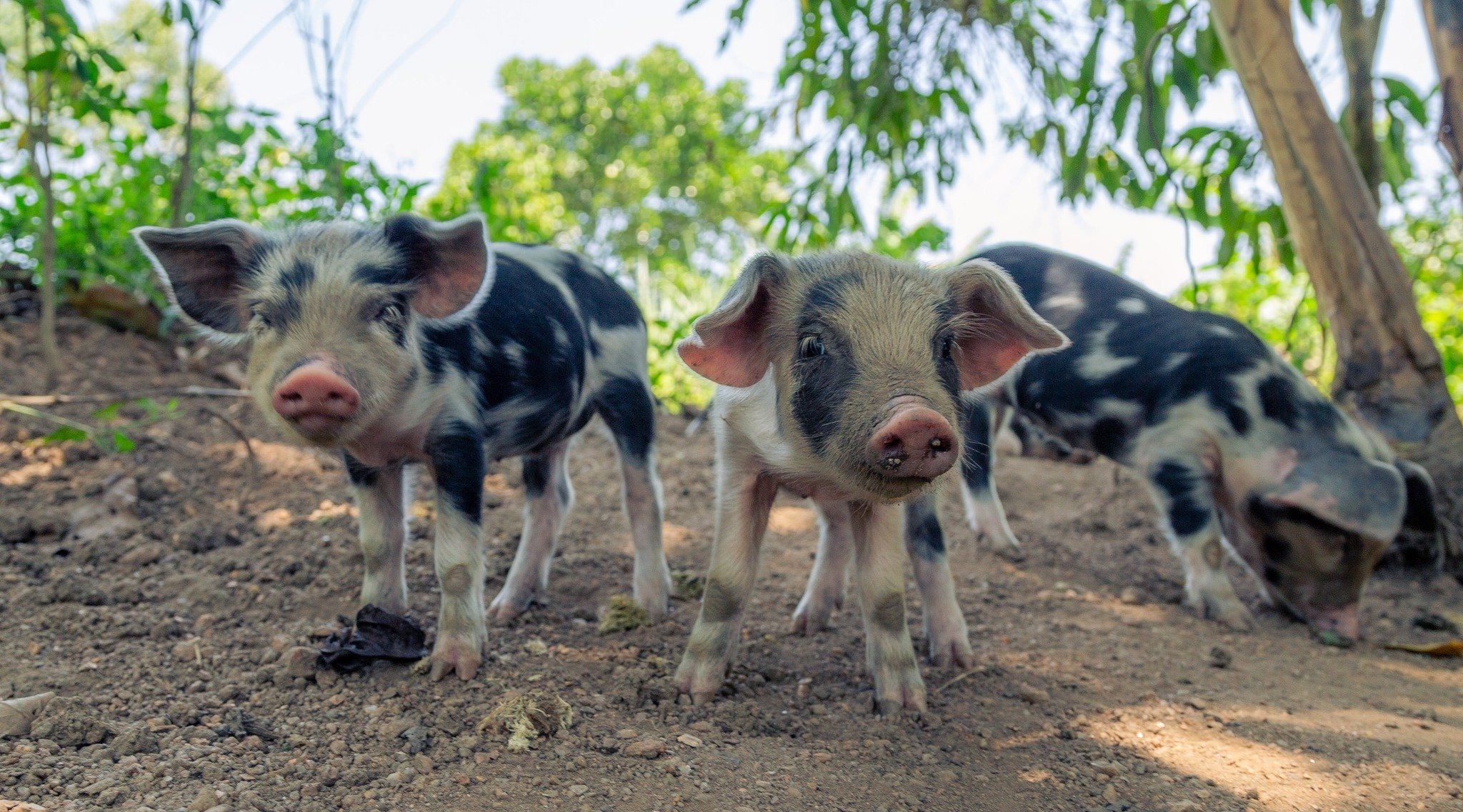
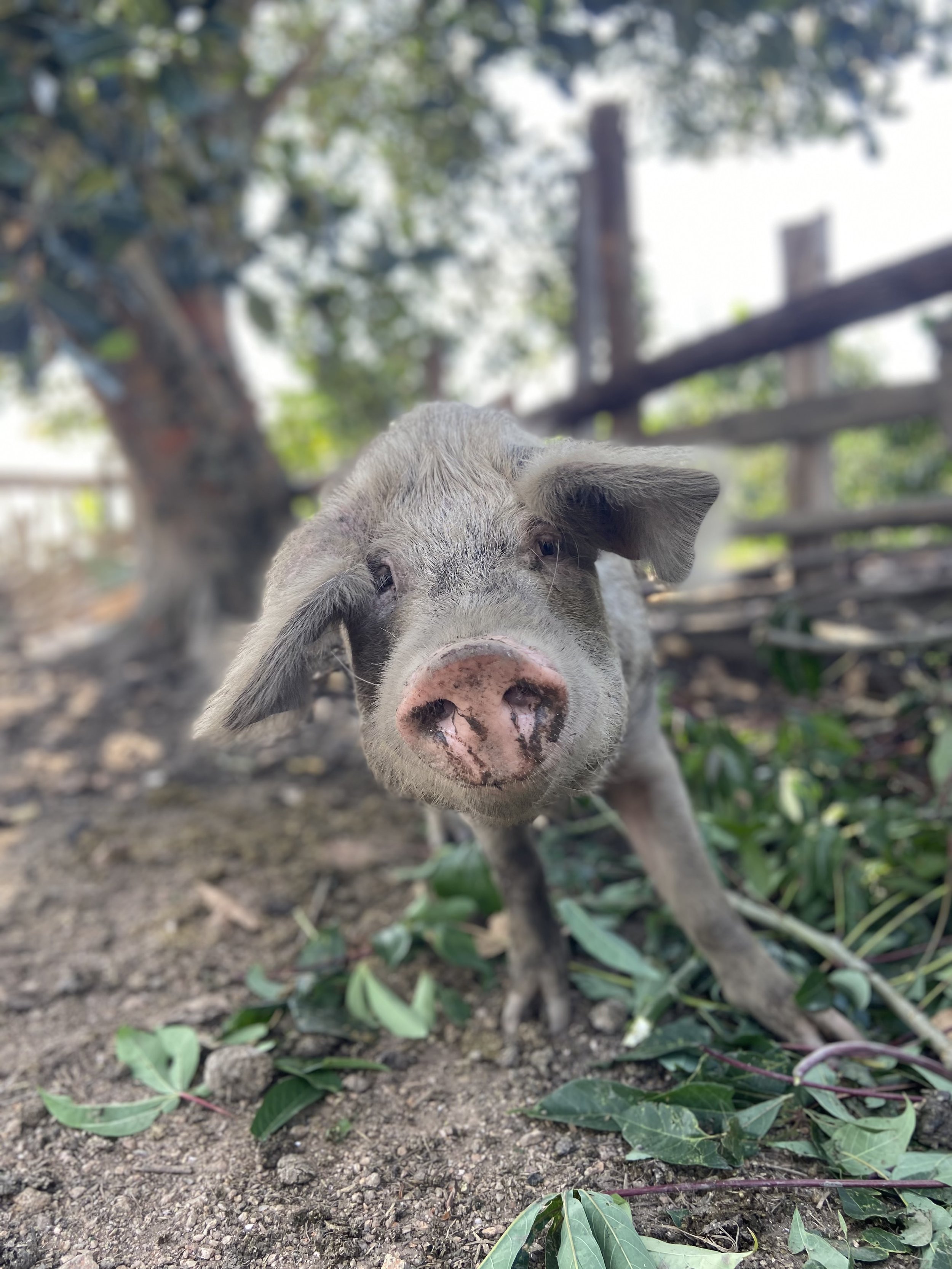
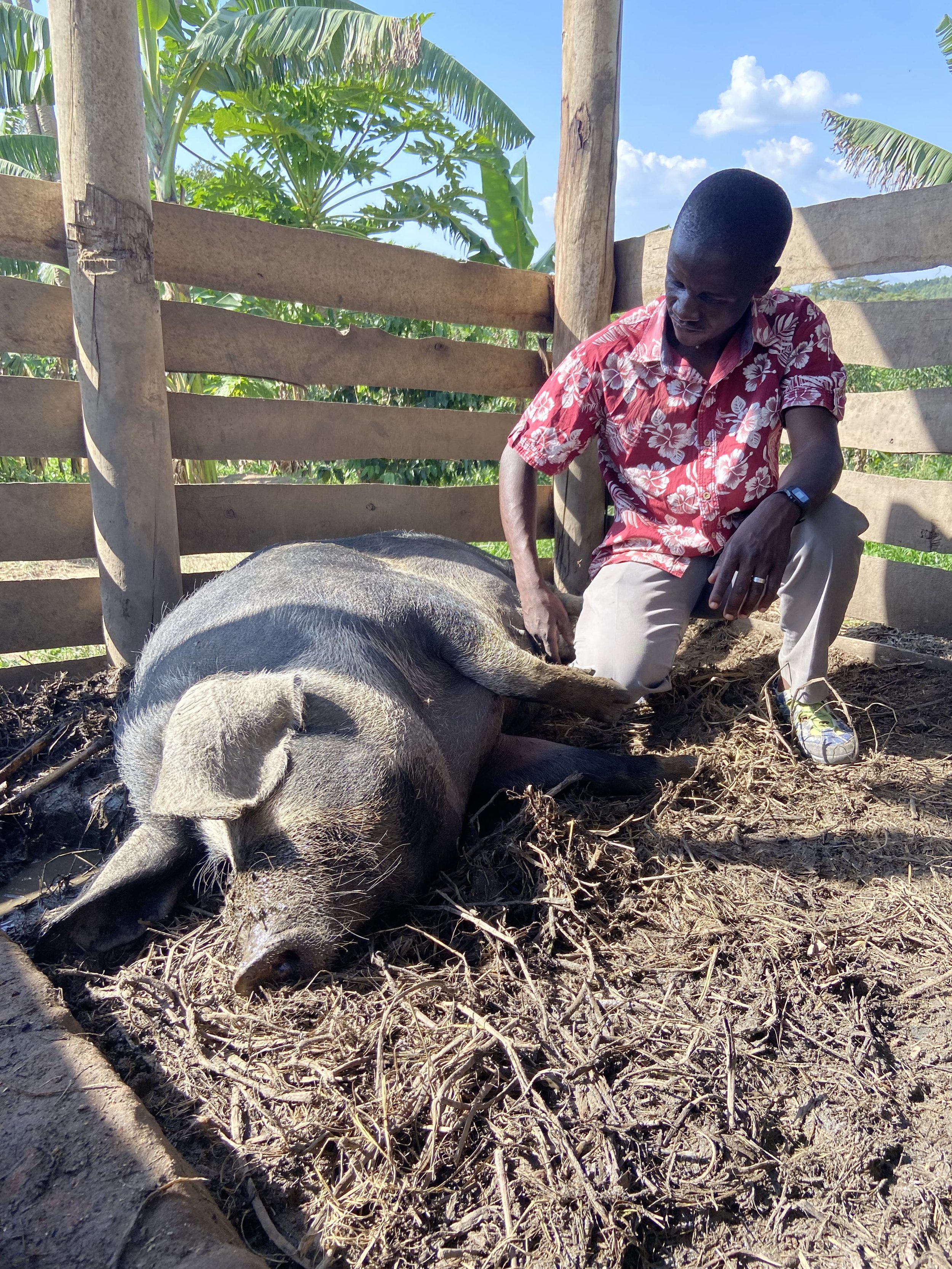
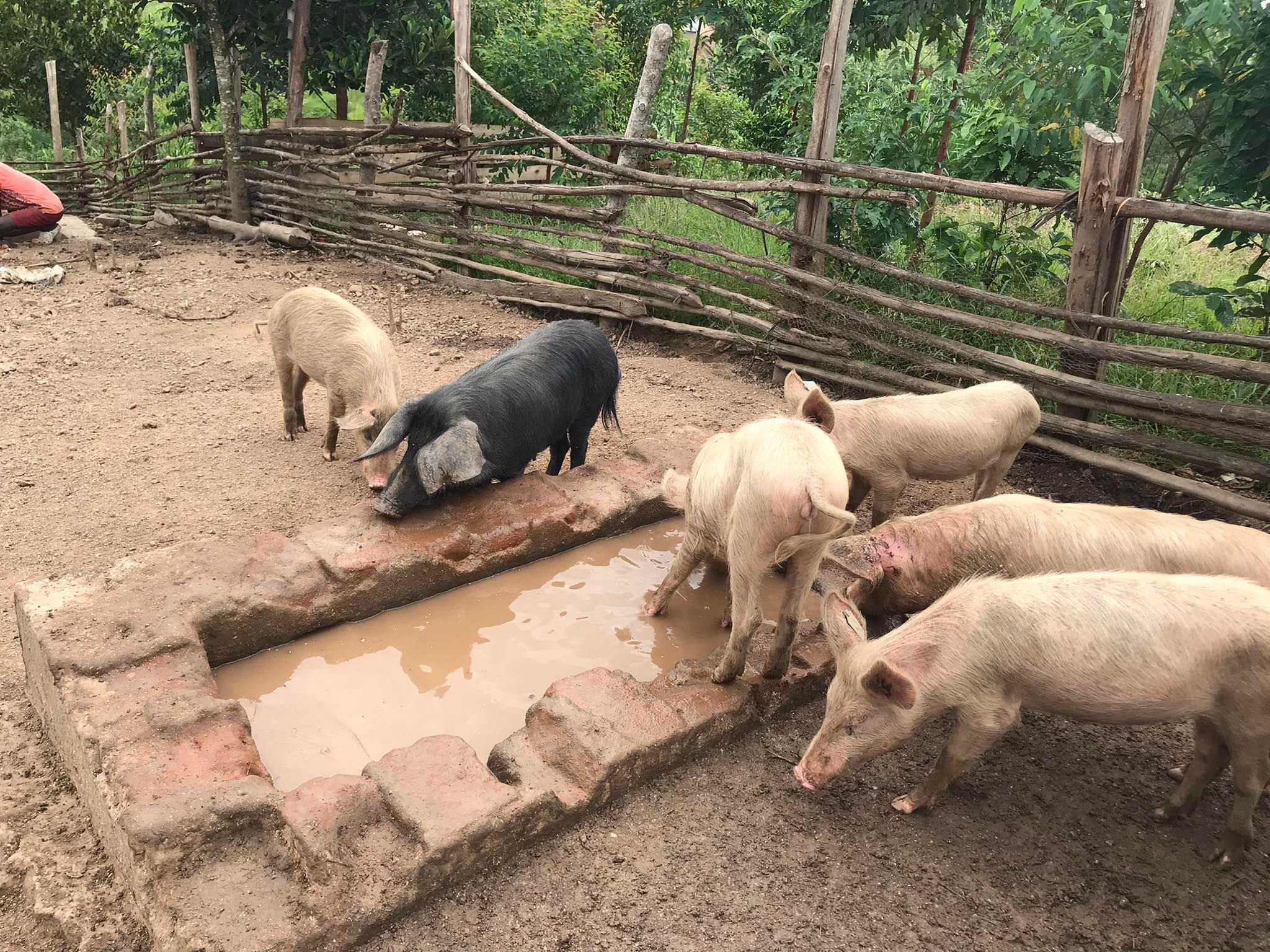
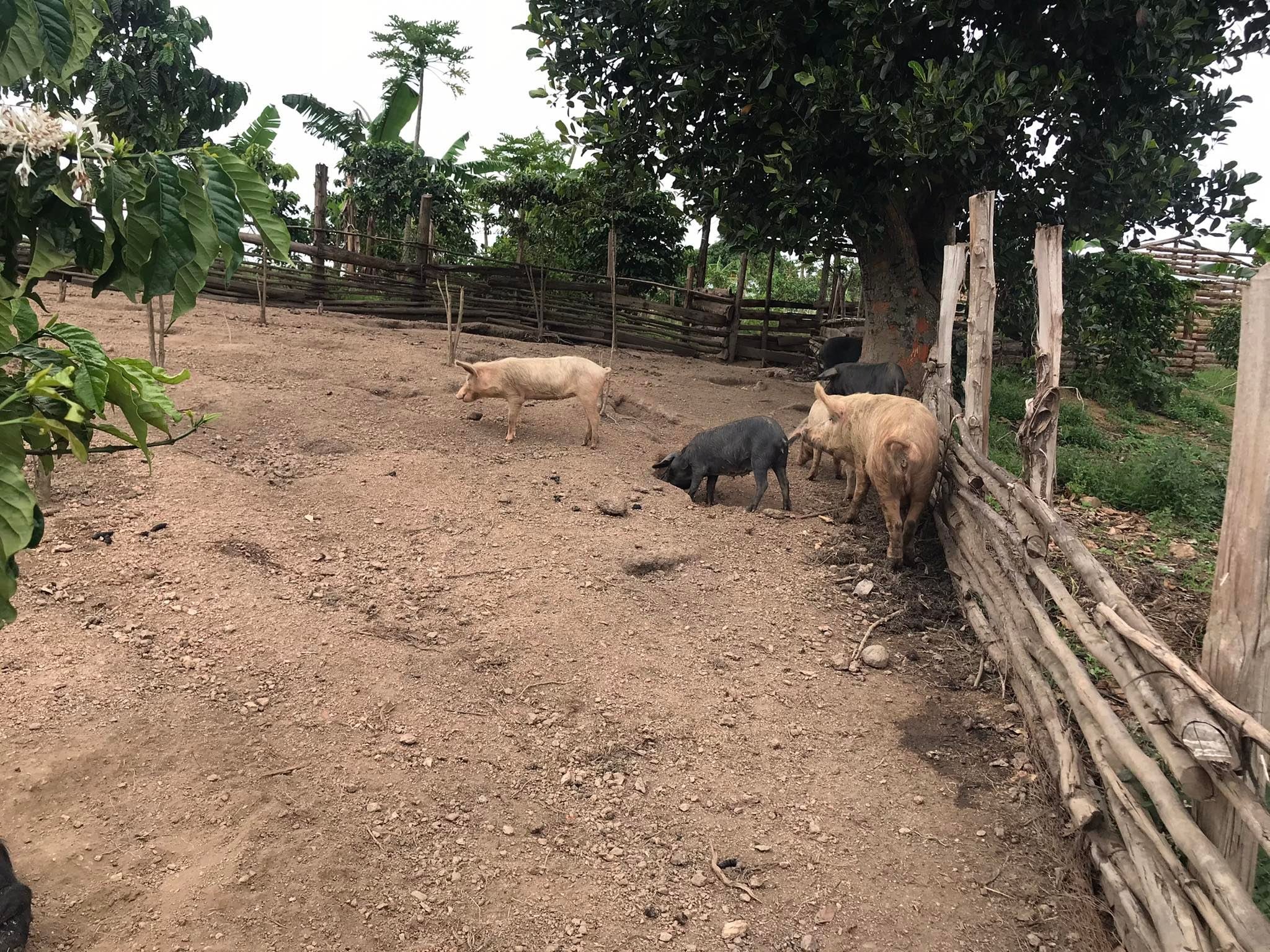
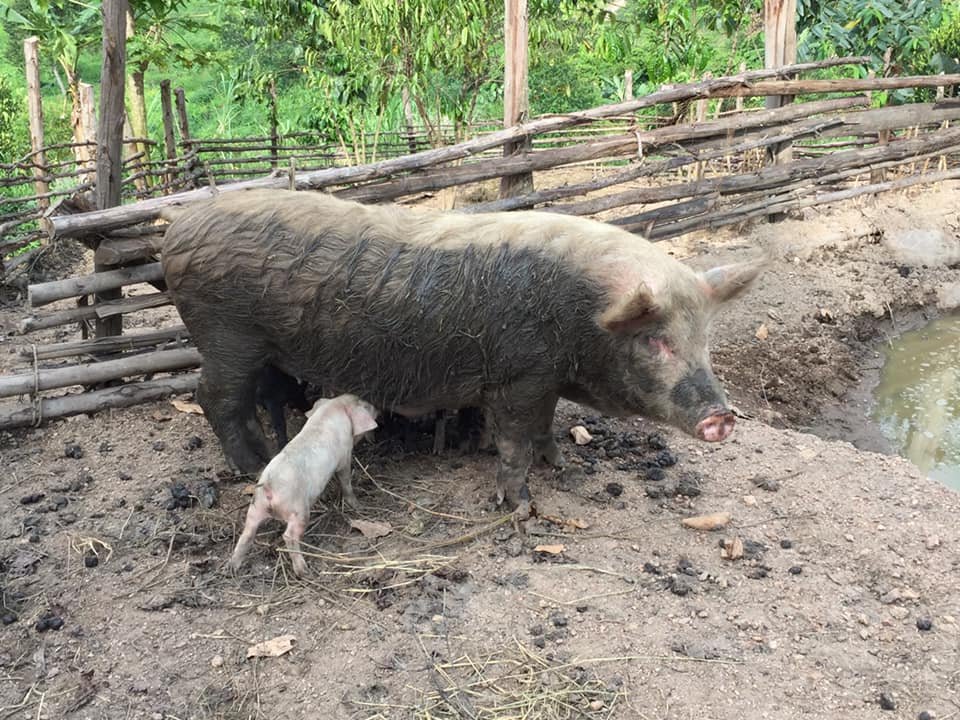
GOATS
Goats are kept in their pens at night and pasture in the large corral with the sheep and cows during the day. They are usually bought when young for about $30 and can be sold for $70 when they are grown. Bruno says that they do not milk their goats because they don’t produce very much and that, in Uganda, the only reasons people would typically milk a goat is if a mother doesn’t produce enough breastmilk or if a baby’s mother passes away.
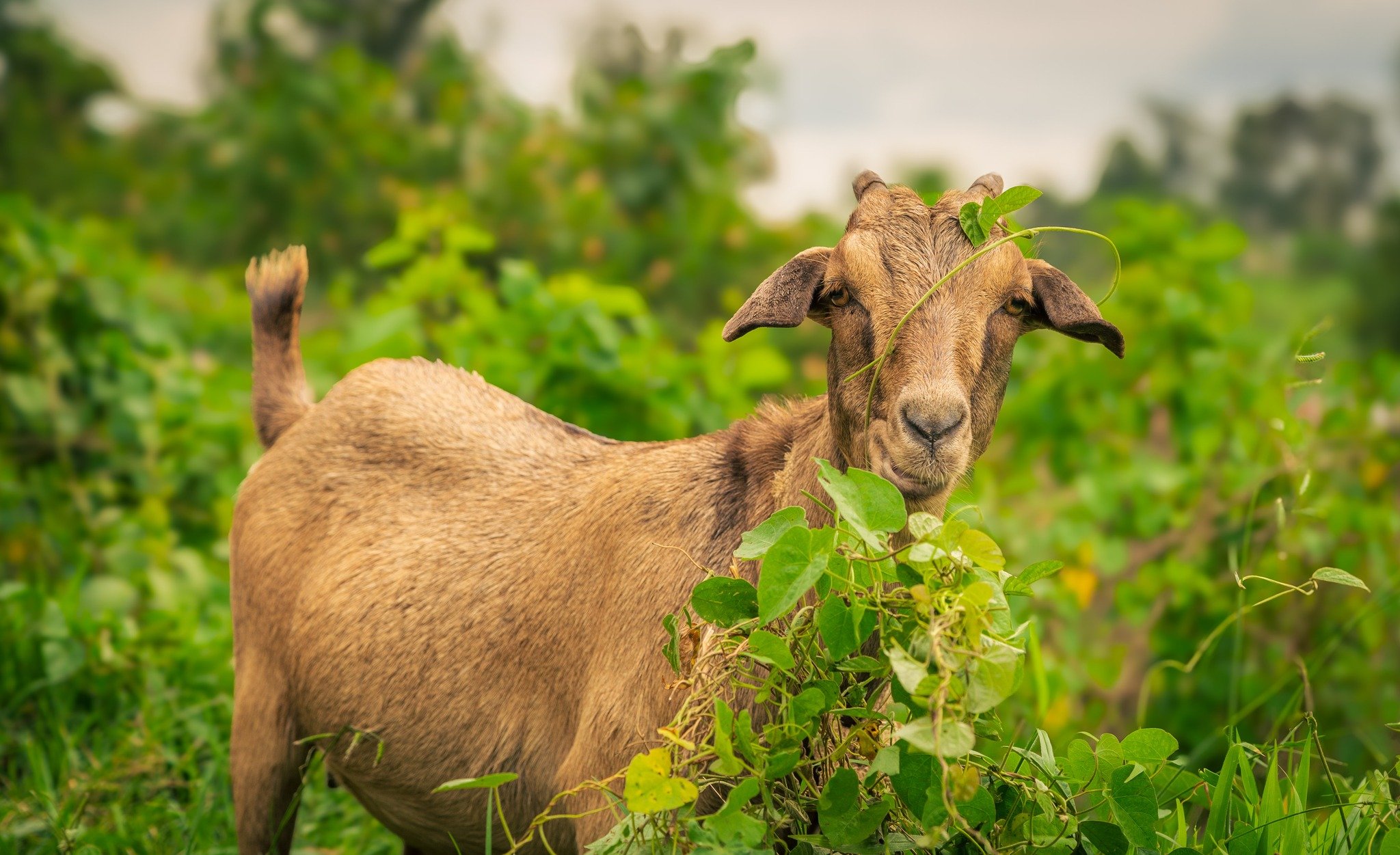
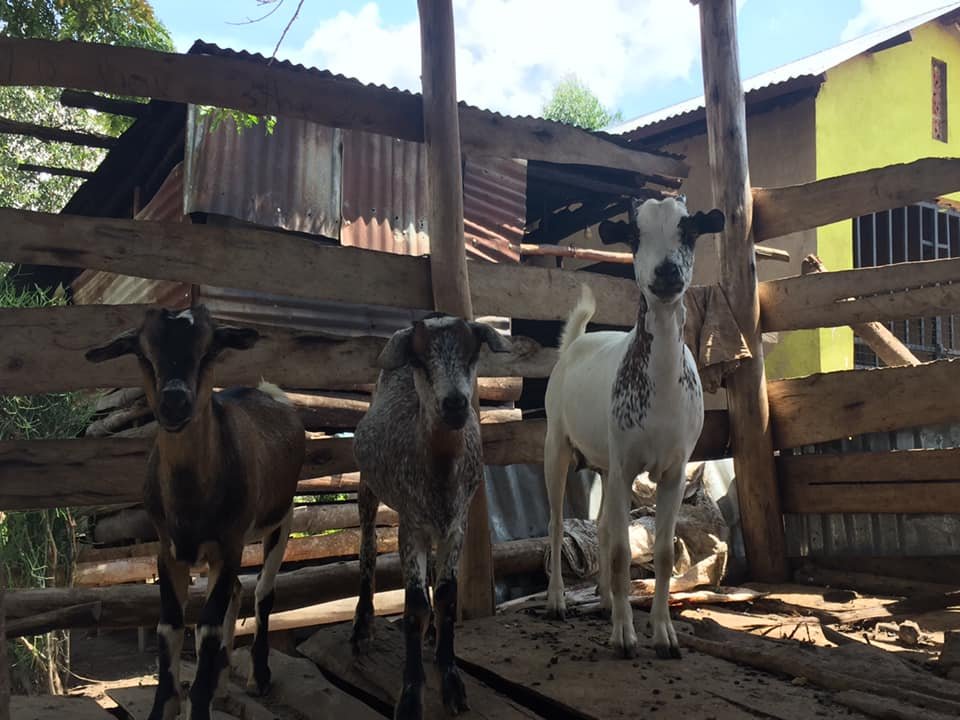

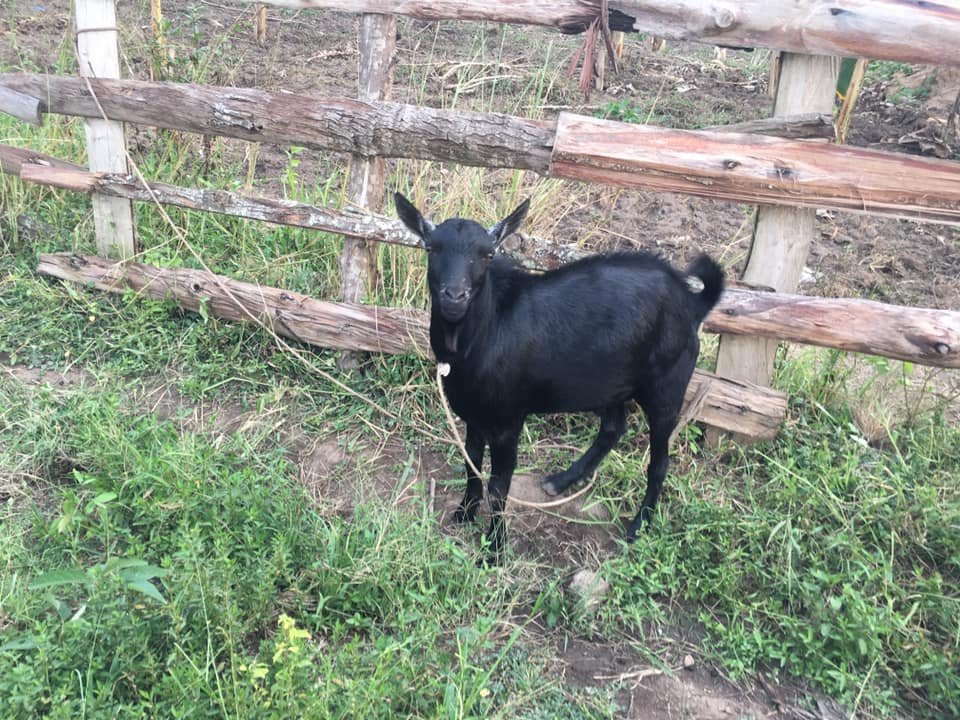
CHICKENS
The Project has a lot of chickens. Chickens are not sold for a profit and their main benefit is, unsurprisingly, eggs. They are mainly fed Big Pig, but they also eat seeds, grass, and insects they find. Typically, it costs about $8 to buy a chicken. The chickens are let out of their coop to be free during the day and go back to their coop at night. Something really funny is that, rather than having to find or chase the chickens at night time, they somehow all walk back together as a group and go into their coop by themselves - the last two pictures below show this!
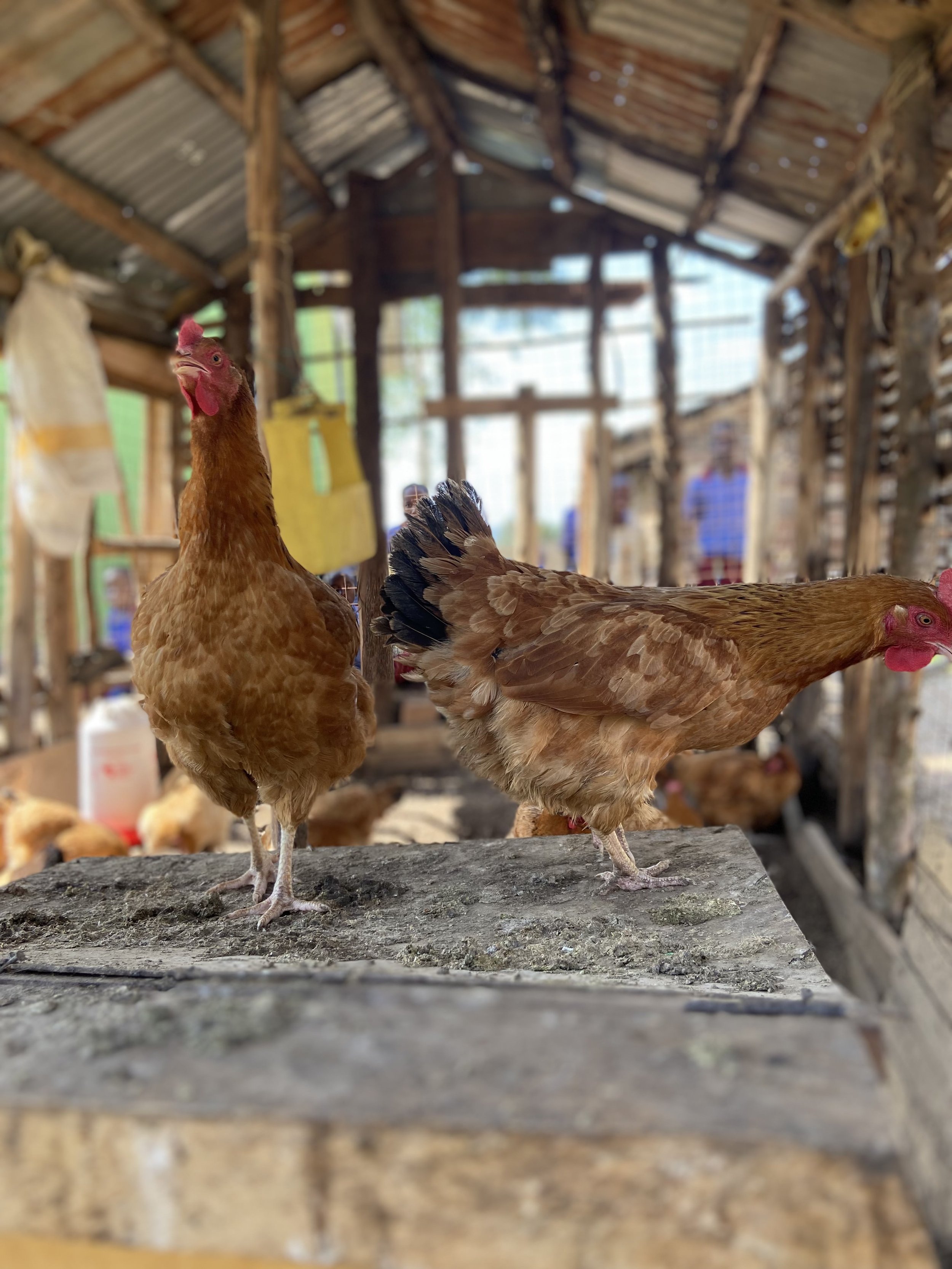
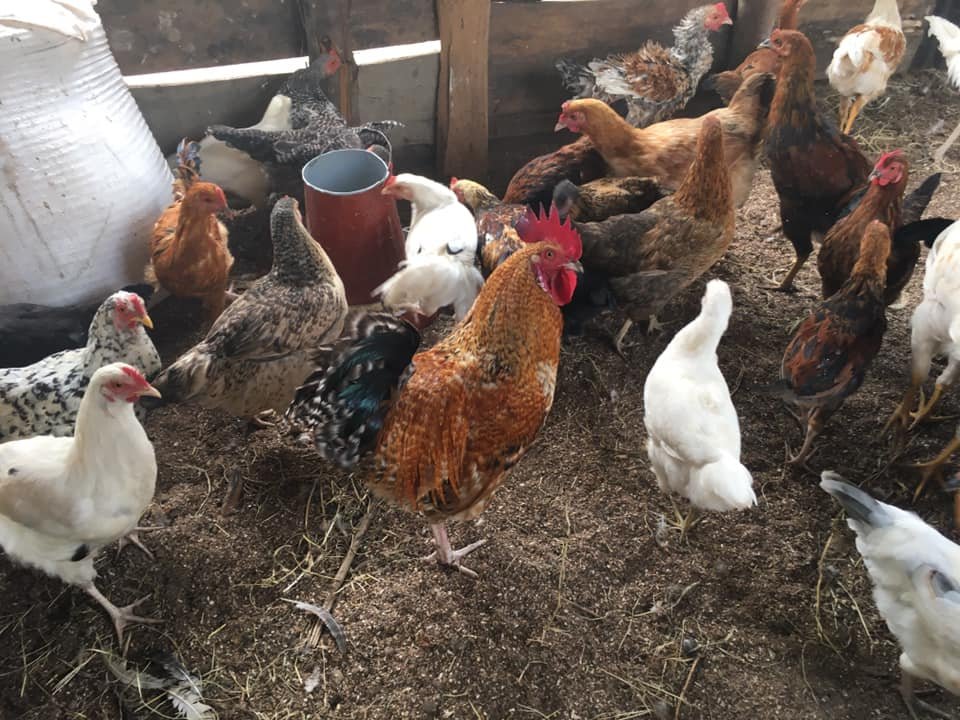
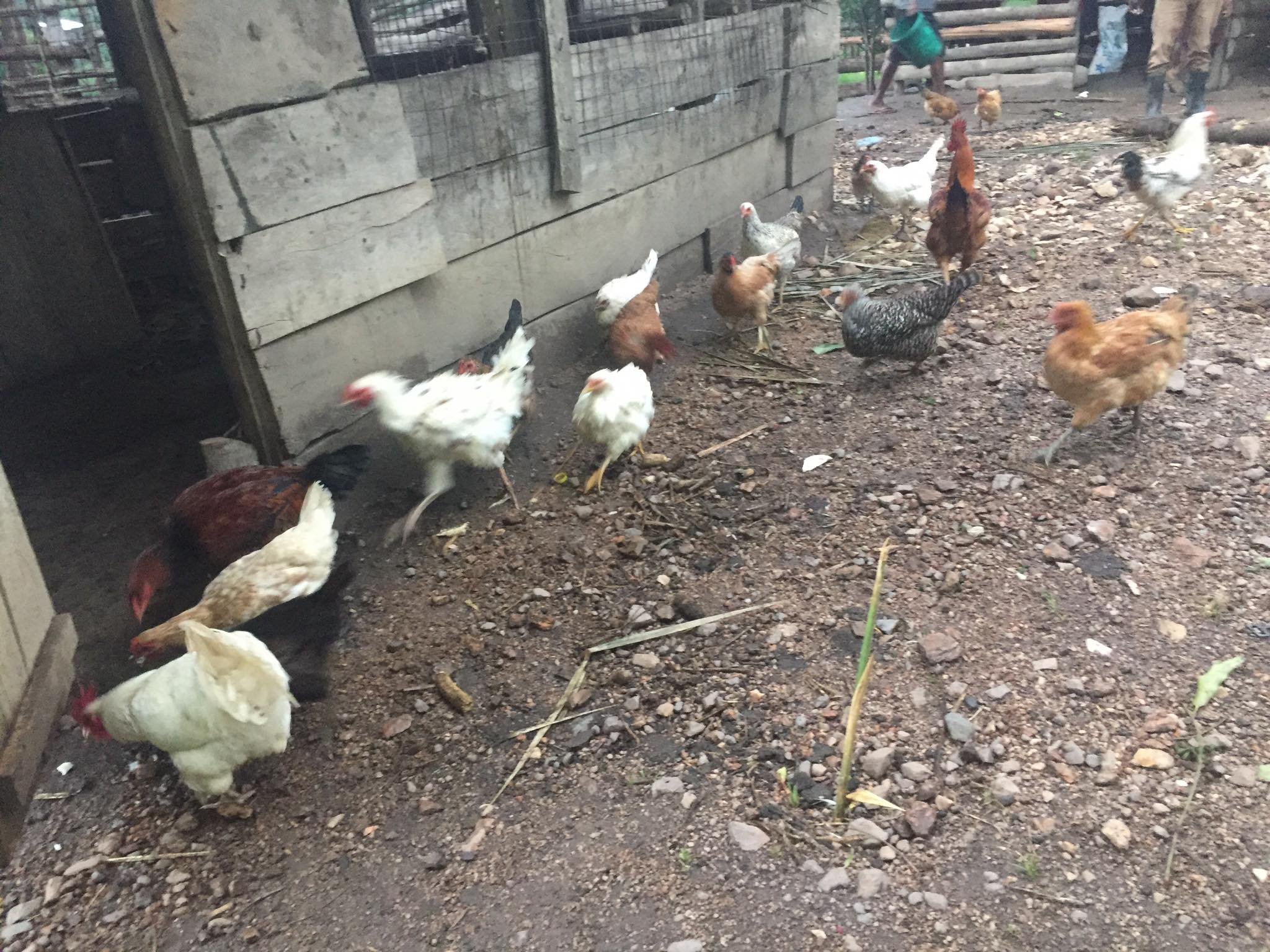
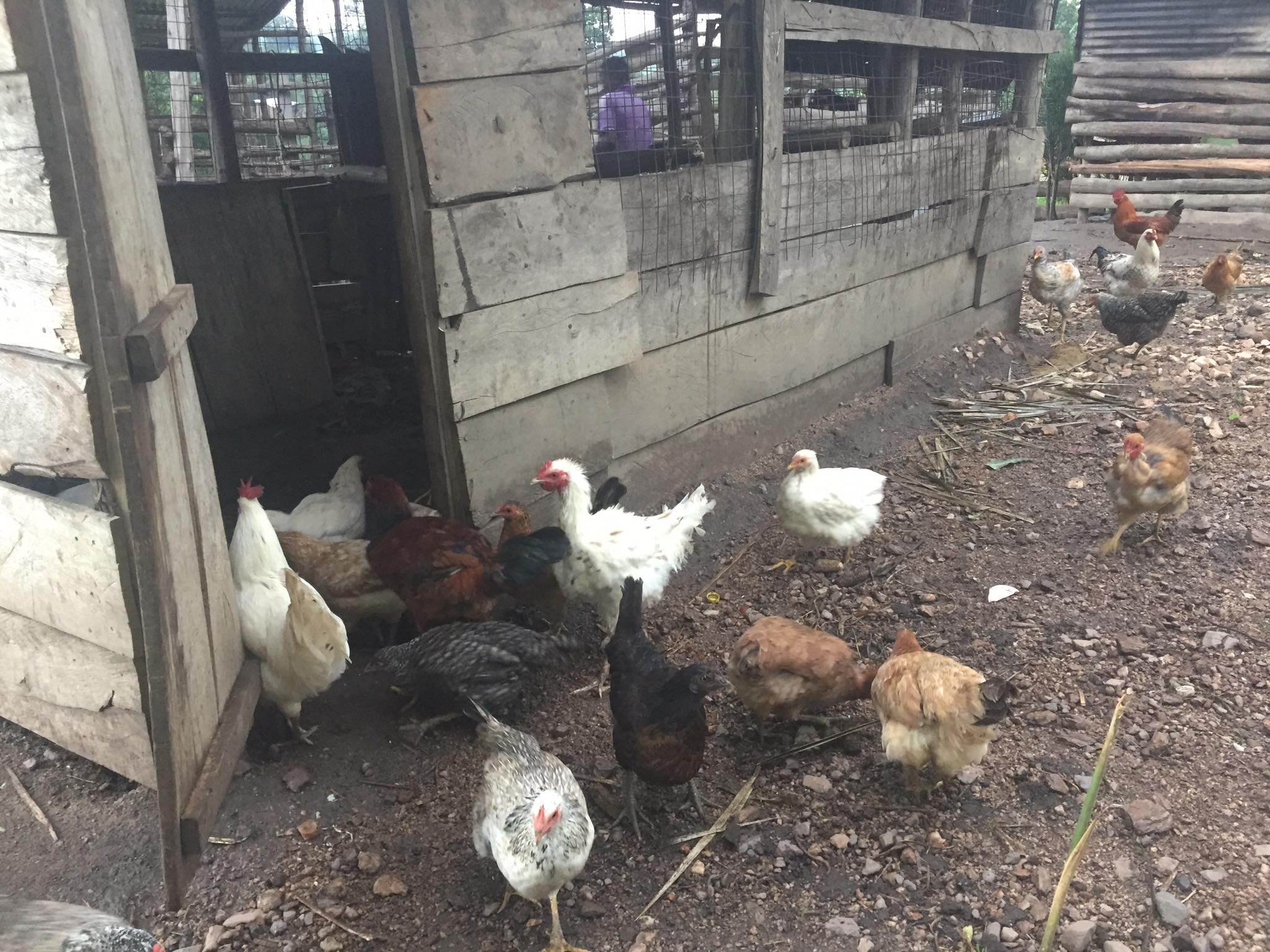
DUCKS
Bruno says that ducks are not a typical animal he would purchase and that the two ducks they own were given to the Project as a gift from other people in Uganda. Just like chickens, ducks are not sold for a profit and their main benefit is eggs. They are fed rice, fish, and Posho. One duck typically costs around $6. Contrary to the chickens, they are kept in their coops during the day and are let free to roam at night. The reason for this is that, otherwise, the ducks chase and attack the children all the time. Bruno chuckled when he mentioned that, since they are only let out of their coop at night, they are now attacking the night guard. Below, I have included pictures of their coop.
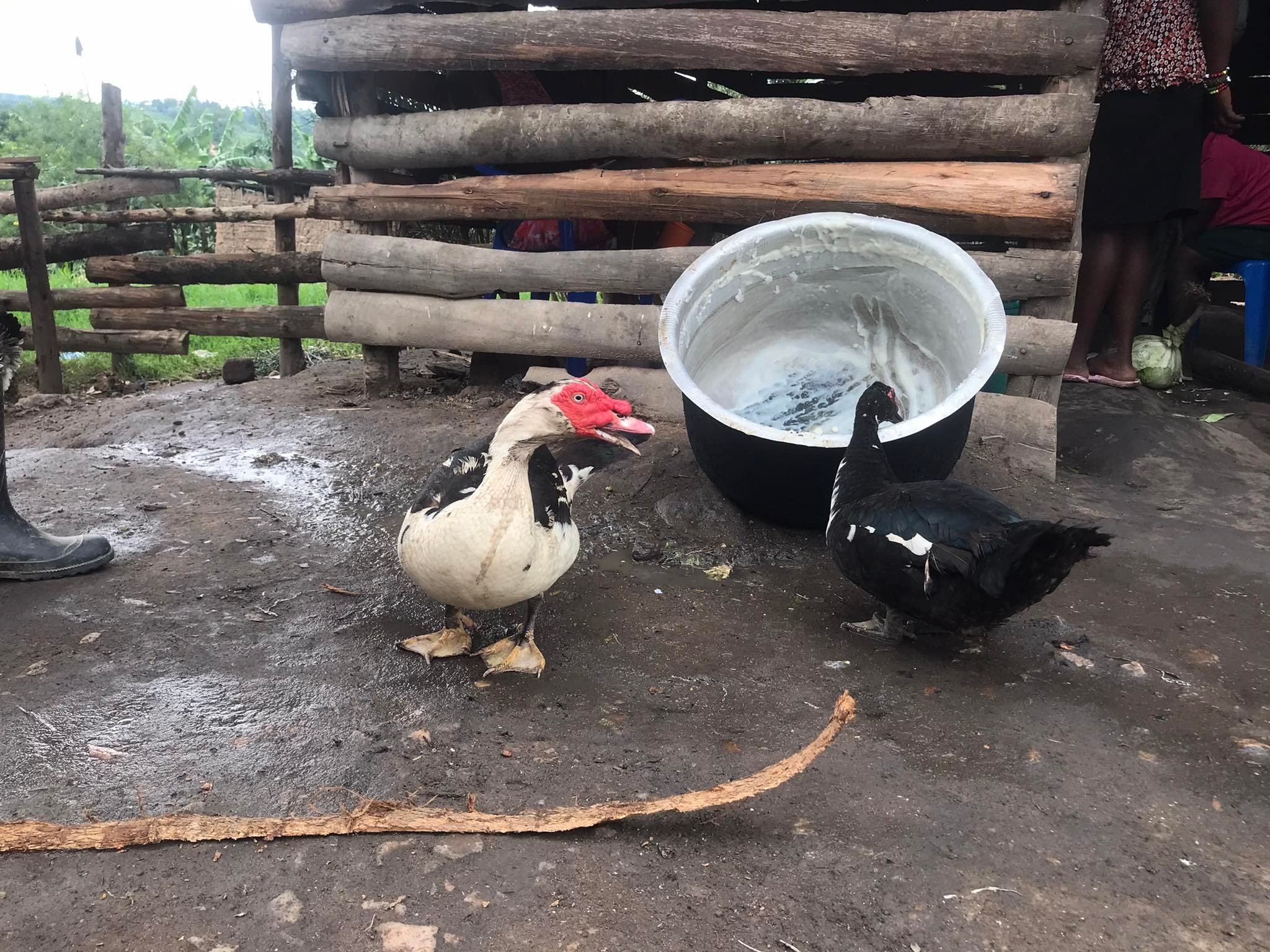
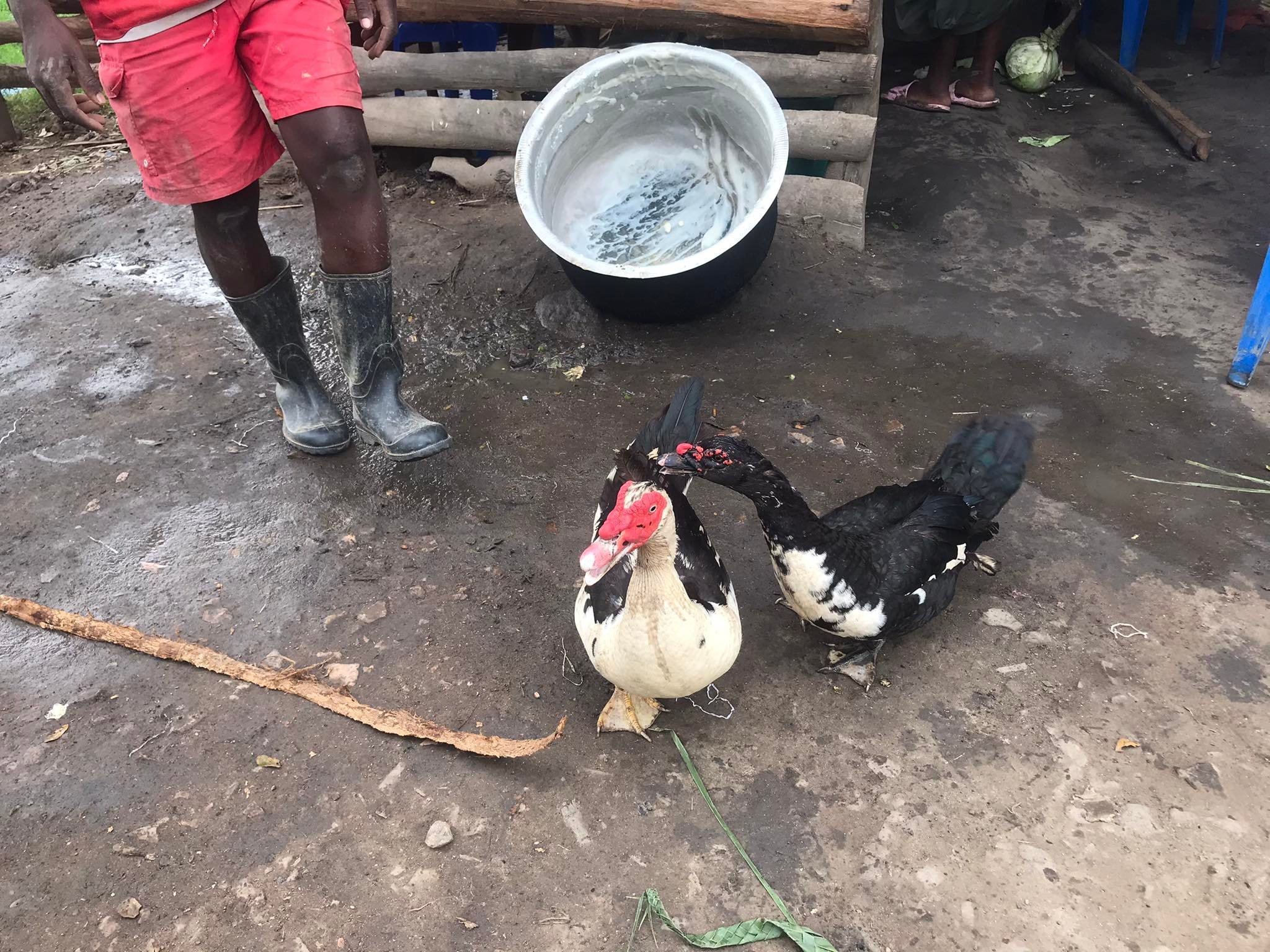
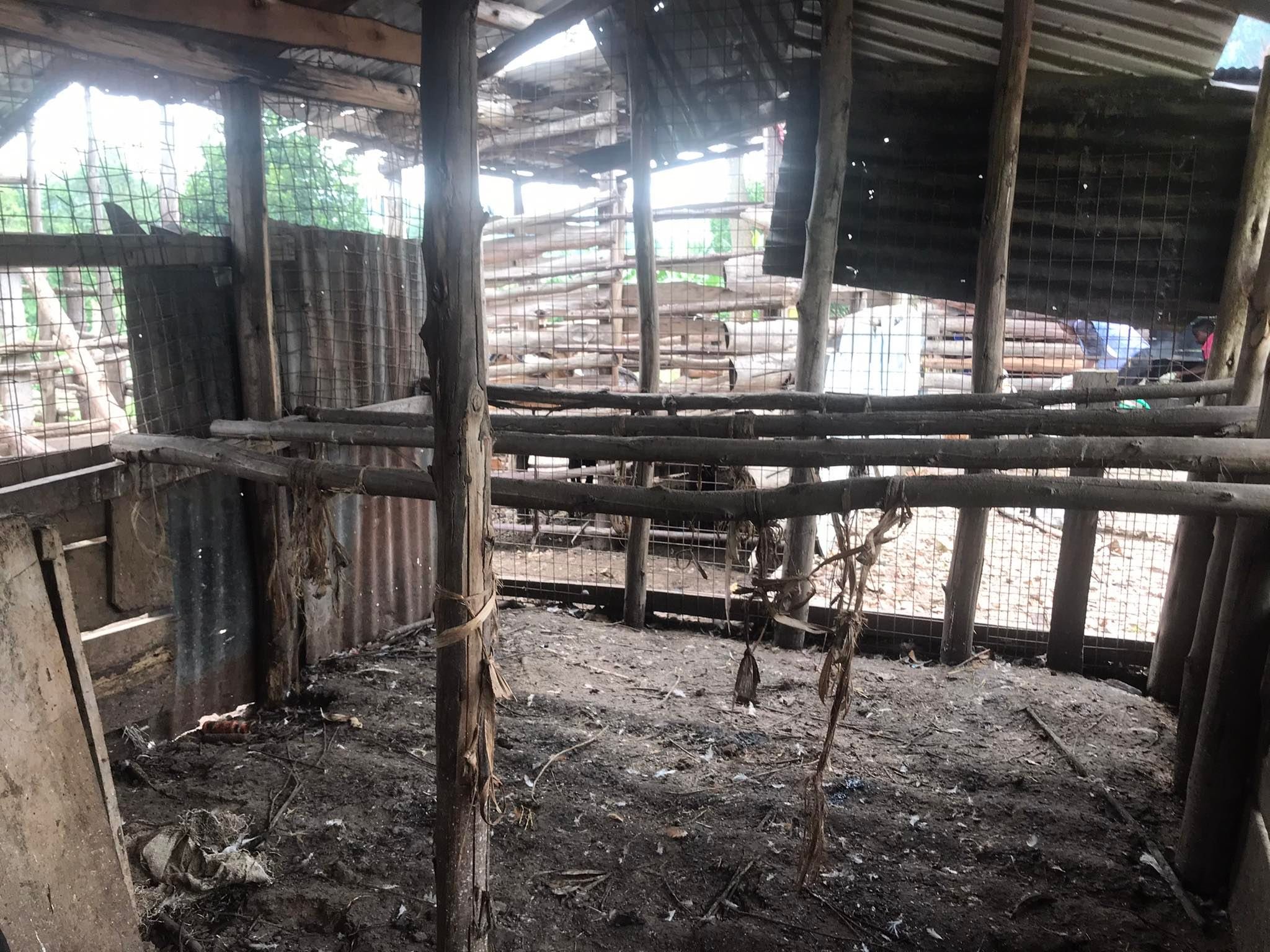
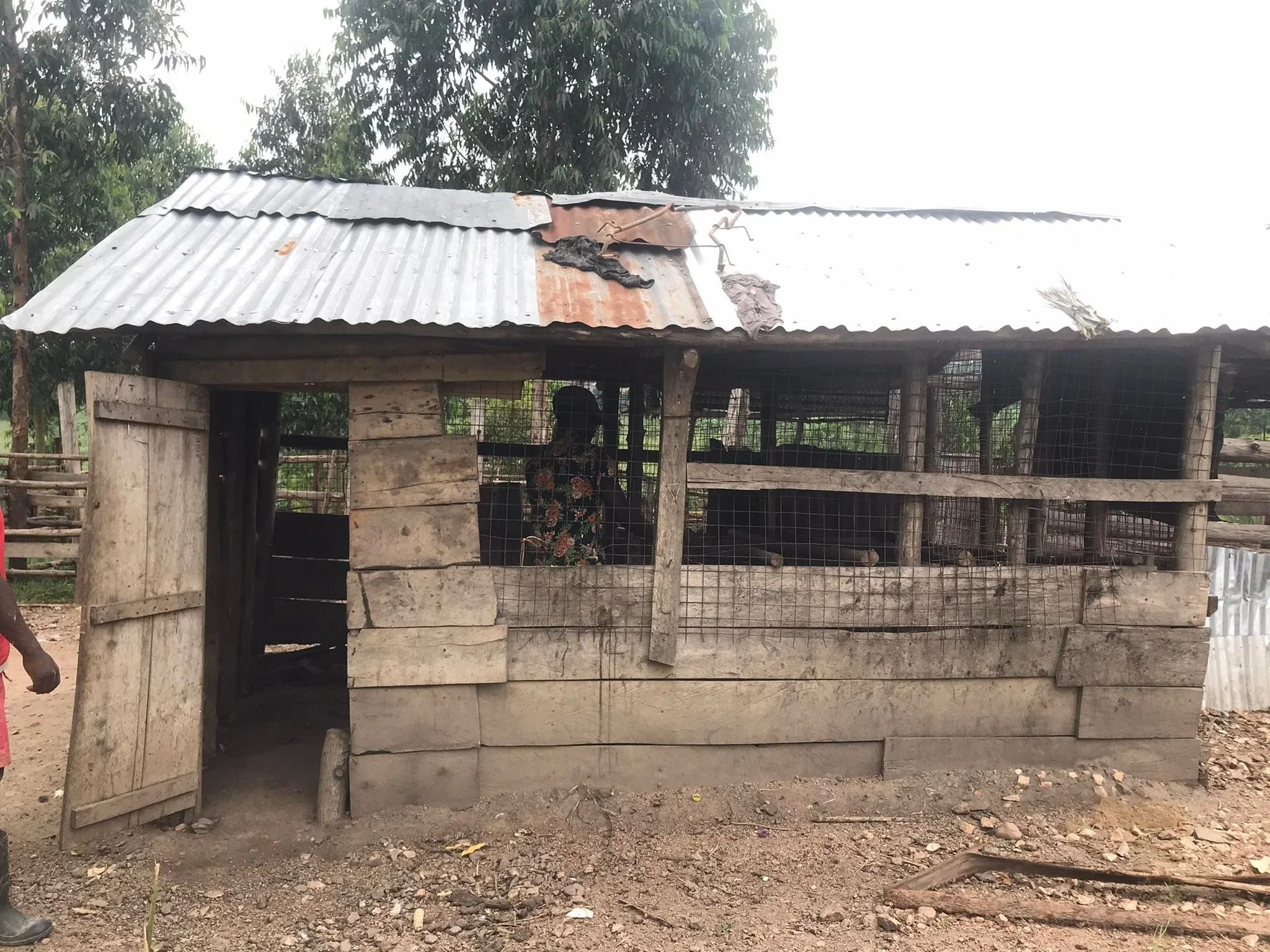
SHEEP
Sheep are great animals for the Project to have. They reproduce quickly and are easy to care for. The Project doesn’t need to purchase food for them as they are let out to pasture all day in a large corral where they eat weeds and grass. It would cost Bruno $20 to buy a baby sheep and $60 to buy a medium sized one. Once fully grown, they can be sold for $100. The goal is, when they eventually have a lot of sheep, they would then start considering selling some of them to make a profit. Bruno says the sheep feel more like pets than farm animals because they are so sweet and docile. They are the one animal that does not try to pester the people who clean their enclosure.
